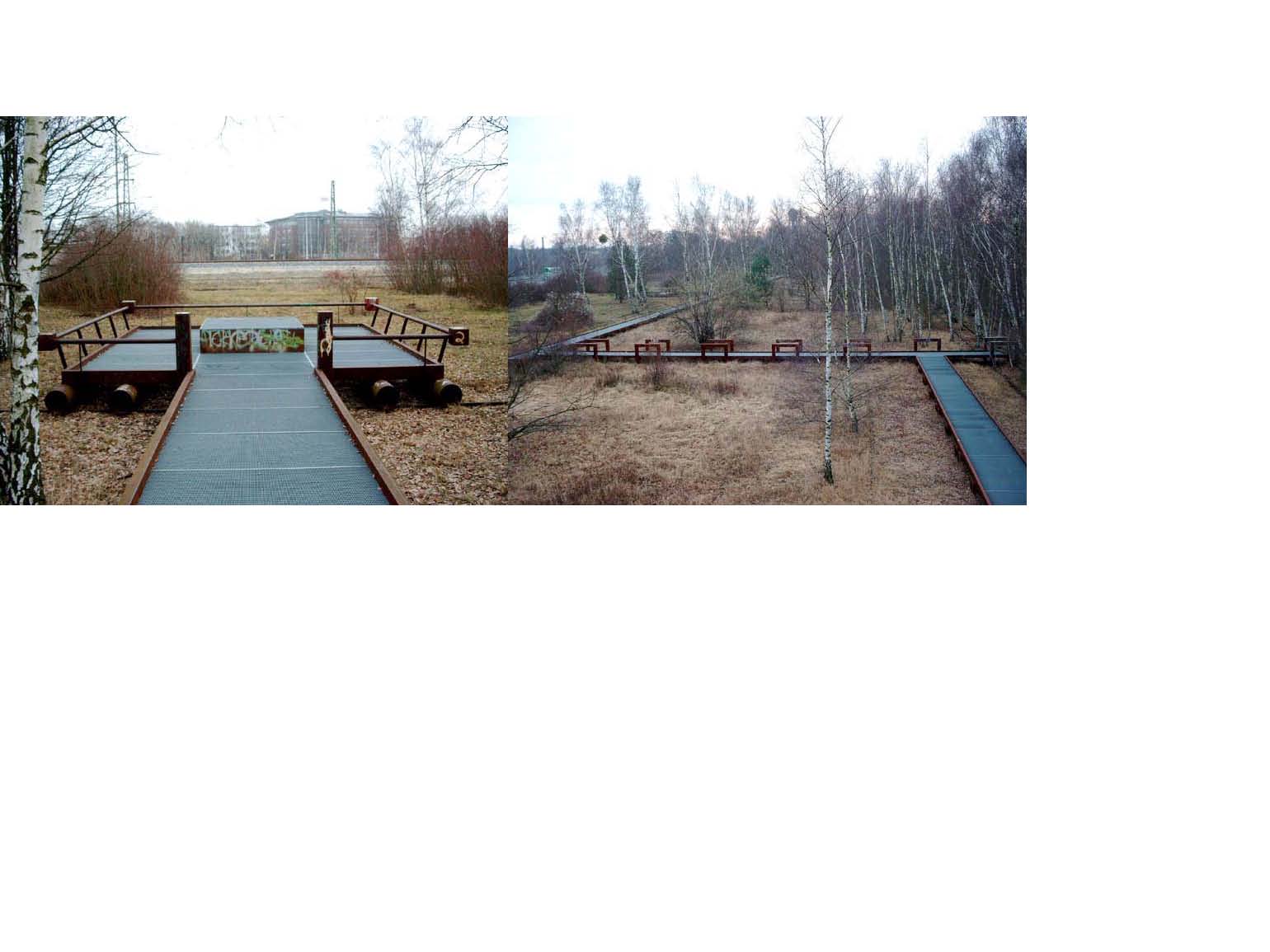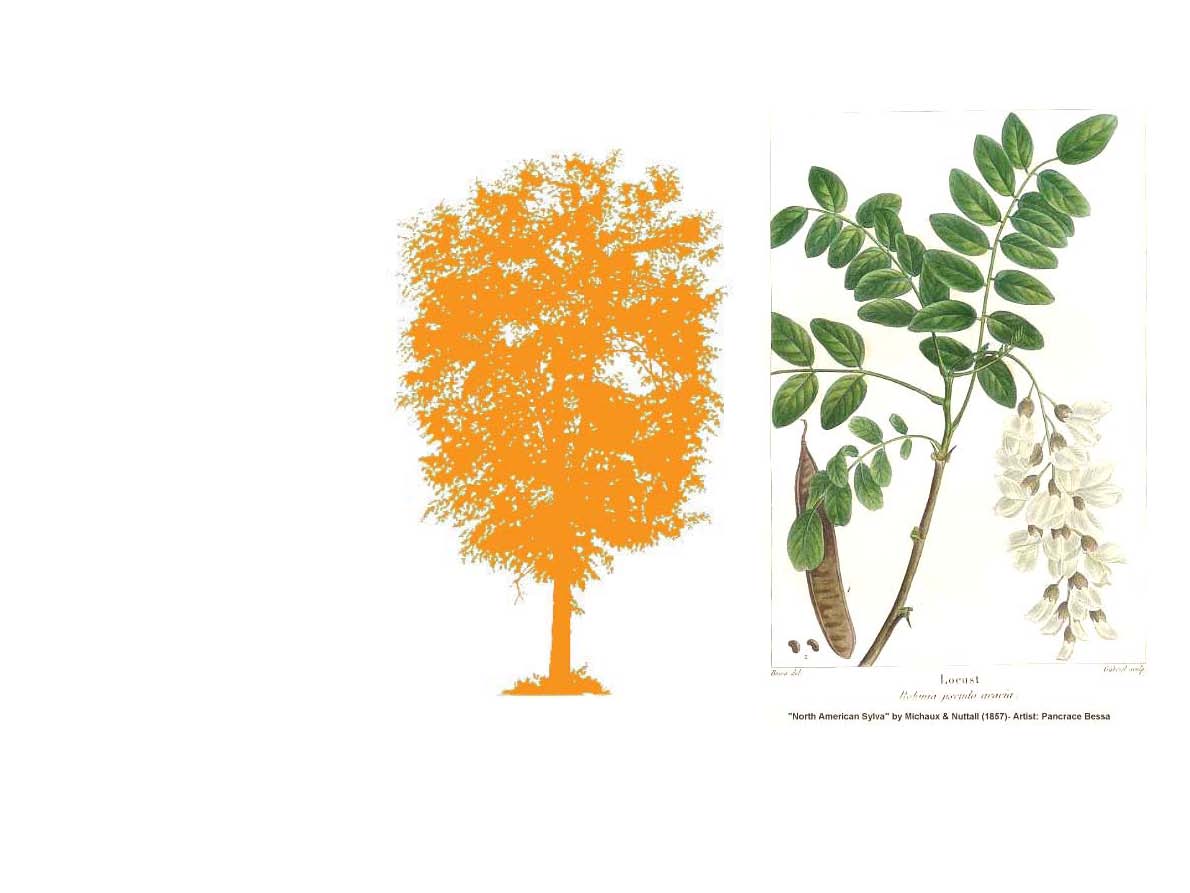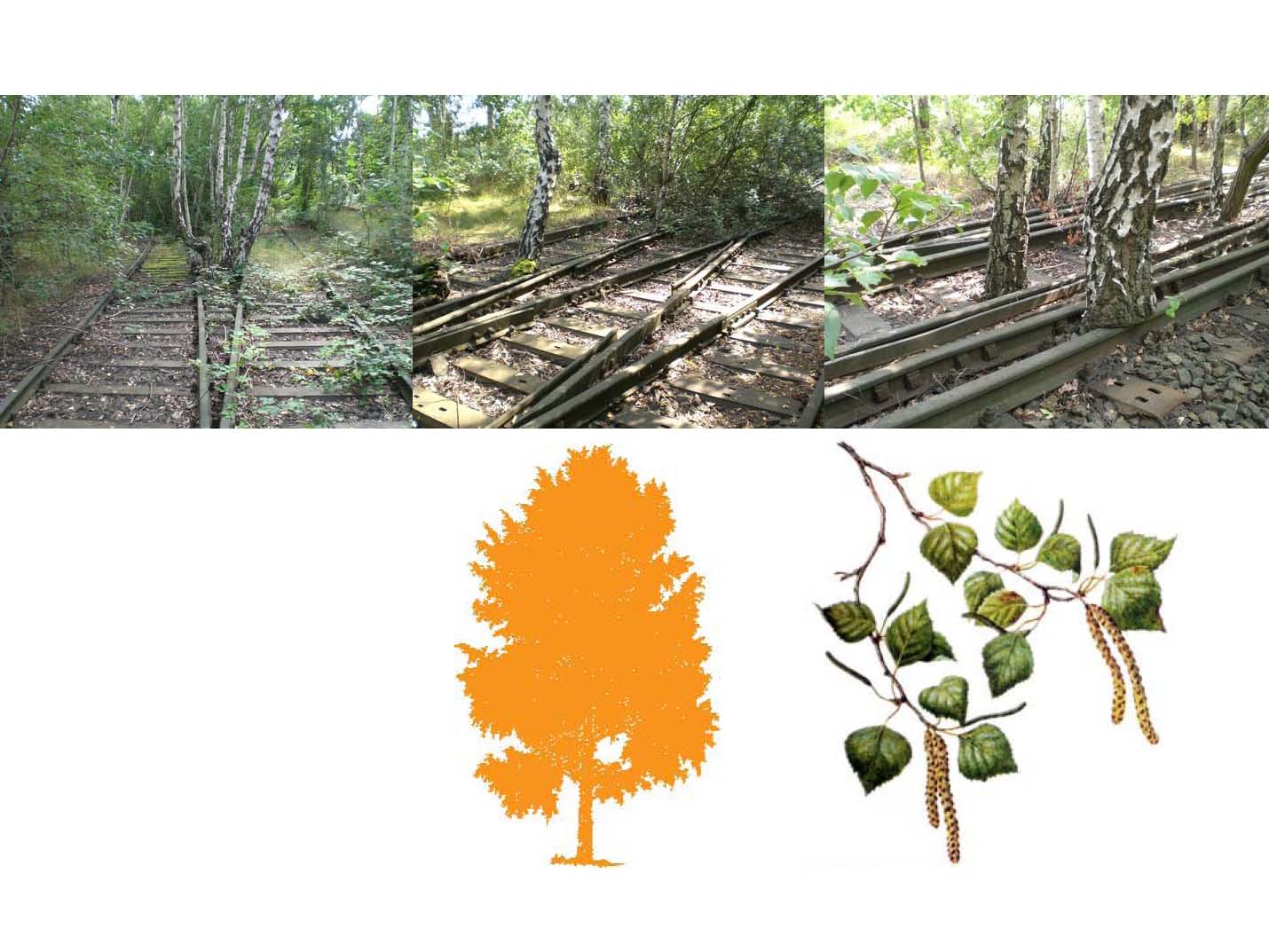Sudgelande Landscape Design_use areas |
||||
Nature protection areas As the post industrial landscape evolves through successional stages, the area within the site characterized by woodland ecosystems has tended to expand rapidly. The maintenance and use regimes for the the remaining grassland areas have been designed to maintain the early successional open grassland ecosystem.
|
||||
(Source:Grun Berlin: Park und Garten, "Nature Park Schoneberger Sudgelande," http://www.gruen-berlin.de/suedEN/index.php, Accessed 1/10/08) |
||||
(Source [left and right]: Odious, "Landschaftsgestaltung: Naturepark Schoneberger Sudgelande: 1998-2000," http://www.gruppe-odious.de/landschaft_sued.html. Accessed 1/10/08) |
||||
Landscape protection areas Between 1981 and 1991 the proportion of the site characterized by woodland ecosystems doubled from 37% to 70% of the total land area. These areas typically have a lower species diversity and richness than areas in earlier successional stages. There are two relatively distinct woodland ecosystem: Robinia dominated forests and Betula dominated forests. (Kowarik, 289) Betula_ Robinia_ The presence of and interrelation between the two woodland ecosystem types present at the Sudgelande Natur-Park is emblematic of the unique character of such post-industrial urban wildlands. Such ecosystems often have more in common with another ‘metropolitan’ forests halfway around the world than they do with a peri-urban or rural woodland in the same region. |
||||
|
| Sources and Further Information |
| Natur-Park Sudgelande: Linking Conservation and Recreation in an abandoned railyard in Berlin. Ingo Kowarik, Andreas Langer. in Wild Urban Woodlands: New Perspectives on Urban Forestry. Kowarik, Ingo, and Stefan Korner, eds. Berlin: Springer, 2005. |
Page, Nancy and Richard E. Weaver Jr. Wild Plants In the City. New York. Quadrangle/The New York Times Book Co., 1975. |
| E-Vue: Emergent Vegetation of the Urban Ecosystem. http://www.gsd.harvard.edu/loeb_library/information_systems/projects/E_vue/ |



